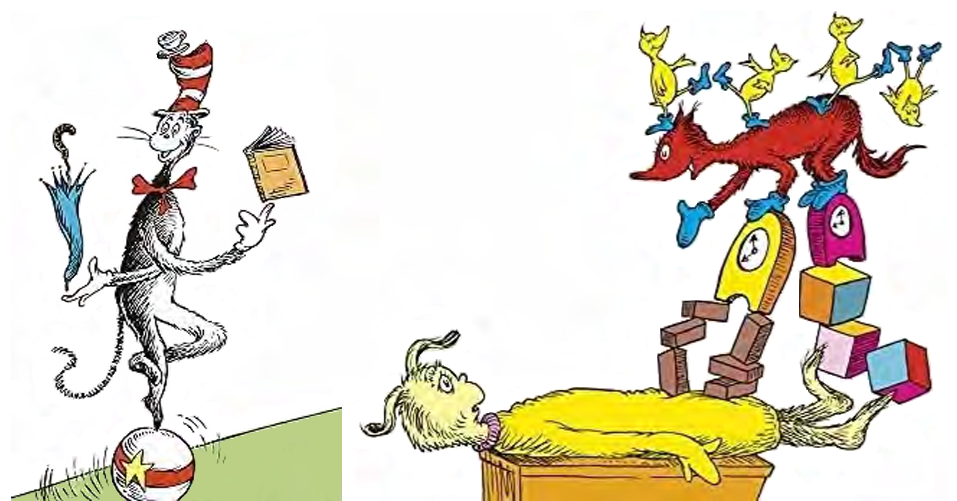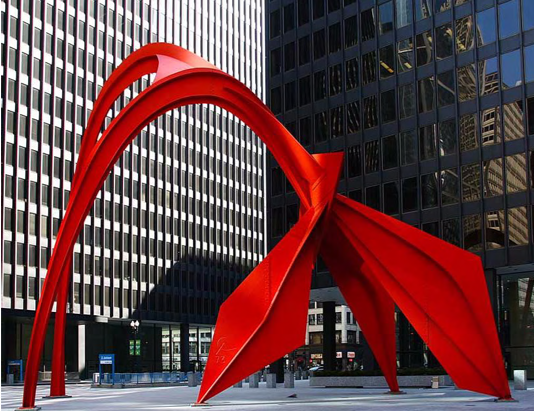Stability (J) / Mobility (P)
Consider the 1880s conflict between farmers and ranchers in the American West. Their disagreement was really about stability versus mobility. Cattle ranchers had allowed their livestock to roam the open range for decades before the Homestead Act brought settlers to the area. The law granted property rights to the newcomers as long as they stayed on the land for at least five years, so their goal was to build a house, farm the land, and raise farm animals. Putting a fence around their property was necessary to keep crops from being trampled, but fences also kept free-roaming cattle from accessing the water and grassland they needed to survive.
Johnny Cash and Elvis Presley both began their careers at Sun Records in Memphis. They even performed together at an impromptu jam session with Jerry Lee Lewis and Carl Perkins that became known as the “Million Dollar Quartet.” The difference between the two men is obvious by watching how they used their legs. Johnny Cash was stoic even when he sang fast songs, his only movement a slight sway of his body. Elvis couldn’t hold still, using his legs and hips to express himself and energize the audience. He was “All Shook Up.”
The gyrating hips and shaking legs that became his trademark were natural to Elvis from the beginning of his career. His drummer explained: “He was always moving around—I don’t think he could have stood still if you paid him to stand still.” Elvis himself said that he would go crazy trying not to move while playing rock and roll.
Early in 1956, Elvis moved to the RCA Victor record label. Told to stand still on a painted “X” on the floor so the microphone could pick up every sound he made, Elvis couldn’t do it. He explained to the producer that he had to “jump around to sing it right. It’s something that just happens—just a part of the way I sing.” The entire studio had to be re-miked to pick up sound from anywhere in the room. The effort was worth it, recording the legendary “Heartbreak Hotel” that same month.
Johnny Cash (ESFJ) / Elvis Presley (ESFP)
Beatrix Potter (INFJ) / Dr. Seuss (INFP)
Just as the paintings of Vincent van Gogh (INFJ) were grounded in three dimensions and the paintings of Marc Chagall (INFP) defied gravity, the art of Beatrix Potter showed calm scenes with minimal movement while Dr. Seuss drew things in motion or dared gravity to topple delicately balanced objects.


The stories they wrote also reflected their temperament types. The drawings above are for stories about deliberate actions: Peter Rabbit disobeyed his mother by entering Mr. McGregor’s vegetable garden, Jemima Puddle-Duck searched for a place to hatch her eggs, and Timmy Tiptoes stored nuts before the coming winter.
The drawings below reveal some of the ongoing chaos behind Dr. Seuss’s stories.


Figure 90: Drawings by Beatrix Potter
Figure 91: Drawings by Dr. Seuss
Gutzon Borglum (ENTJ) / Alexander Calder (ENTP)


Figure 92: Borglum's Mount Rushmore National Memorial (1927–1941)
Having made a name for himself by creating numerous historical statues, including a marble bust of Abraham Lincoln and a seated Lincoln in bronze, Gutzon Borglum was commissioned by the state of South Dakota to turn Mount Rushmore into a gigantic monument. He rejected the original plan of depicting famous people from the Old West, instead choosing to memorialize four American Presidents.
It’s rare to find an ENTJ Commander that was an artist, and should not be a surprise that he used dynamite, jackhammers, and hundreds of men to create his greatest work. Some saw the sculpture only as an engineering feat, but Borglum designed it to be a work art.
The eyeballs were created by carving holes with a cube of granite left in each one to simulate reflections in their eyes.
He selected the site for its sunlit location, and as the sculpture progressed he studied it in different seasons, weather conditions, and times of day. Then he adjusted his plans to achieve the effects he wanted for all conditions.
He even made sure that the presidents would retain their good looks for at least 300,000 years, explaining: “I’m allowing an extra three inches on all the features of the various presidents in order to provide stone for the wear and tear of the elements, which cuts the granite down one inch every 100,000 years.”
Like Gutzon Borglum who made a sculpture out of a mountain, Alexander Calder was also an innovator.
He invented wire sculpture early in his career and went on to create moving sculptures called mobiles. By balancing shapes that moved with air flow or touch, he allowed spatial relationships to change at random, adding chance to formerly static sculptures.


Figure 93: Calder's Ordinary (1969)


Another art form Calder pioneered is the stabile. As its name implies, it doesn’t move the way a mobile does, but it is not as solid a form as traditional sculpture.
The Flamingo sculpture in Chicago appears delicate, but it weighs 100,000 pounds and stands 53 feet tall. Made of painted steel, it allows people to move through it, offering a changing image as it is viewed from all angles.

